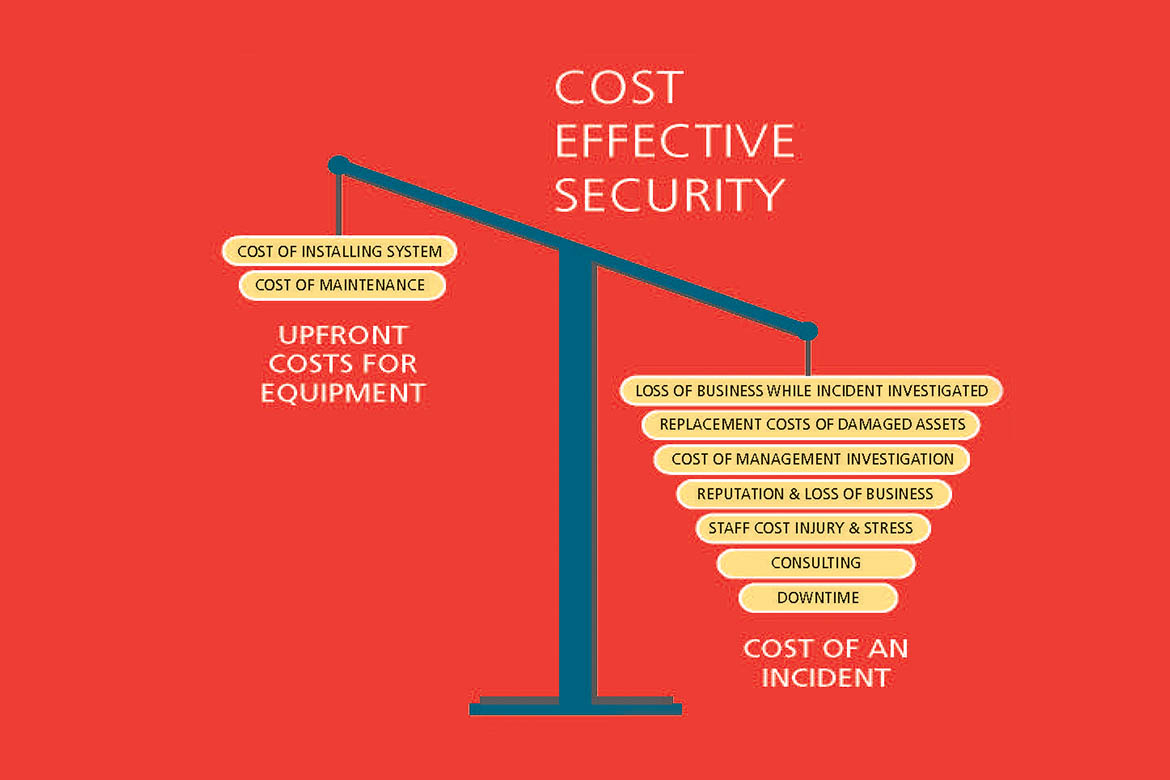Tailoring a corporate security strategy when Code Red is the new Black
In recent years the heightened threat of terrorist attack has become the accepted norm. But is it possible for businesses to operate efficiently whilst ensuring the security of employees, customers and assets without taking a fortress-like approach to physical security? Whilst the safest and most proactive approach to mitigating risk is to be commended, it may not always be the best option for working practices, customer experience or the built environment.
Weighing up the threat – do I have a need?
It is important to understand the nature of threat first by analysing the benefits of a security solution and confirming if the cost is at least equal to the cost of the protected assets, while also considering the additional costs that might be incurred from an incident.
The loss of life is, without a doubt, the most pertinent concern, but the potential risks and costs can also range from loss of business during the investigation, replacement costs, loss of reputation, potential injury/stress, and overall downtime. We often find that once a client understands the cost associated with an incident, they have a better appreciation of the value of protection and cost becomes a secondary concern.
Tailoring a corporate security strategy – choose your provider wisely
The bad news is terrorist attacks are here to stay, so we must consider the introduction of countermeasures as anything but temporary, which can sometimes be seen as imposing on a company’s sleek reception. The good news is there are ways to mitigate risk without asking clients to travail several barbed wire fences; it simply requires a consultative approach to security and may even improve staff efficiency and customer experience. One can start by understanding employee practices and the desired customer experience, then draw upon the experience of a physical security provider to deliver on a specification that mitigates risk and blends harmoniously with an organisation. Look for a manufacturer who offers a broad range of physical security products, from blast resistant doors to ballistic walling and glazing, as well as asset protection and electronic threat detection. By drawing on this vast range, a specifier has a solution that suits a client’s risk profile and operations, rather than their manufacturer’s stock profile.
The provision of security against terrorist threat is often a grudge purchase and customers often request a specific product or technology, typically something obtrusive that creates a fortress-like perimeter that can often seem foreboding to staff and clients. However, the solution they receive is often very different if a consultative approach is taken and the specifier draws upon experience and a vast product range to deliver something that is harmonious with its environment and minimises disruption during ingress and egress.
Take a building foyer, for example
The common belief is that protection against terrorist activity requires additional layers of security, possibly obscuring what was once a light, open, free-flowing space for employees and visitors with blast resistant walling. But by taking the time to understand the client needs, we can implement a range of less obtrusive measures like access control, airlocks or ballistic resistant glazing that blends with its surroundings. Just as a manufacturer looks to colour match steelwork to a corporate identity, they should tailor a project to the client to minimise disruption to an organisation during installation.
Counter Terror measures come in all forms, for all environments, and often require bespoke elements to be designed and installed for seamless integration if they are to blend with their surroundings, possibly even enhancing a company’s identity. As a rule, no standard is fit for all applications. Many physical security (and electronic solutions) can exist and work successfully, but a successful strategy for one environment doesn’t necessarily translate exactly to another. So the key is to choose your solutions provider wisely – selecting a collaborative physical security provider ensures clients get the protection they need, not the fortress they think they want.
Anton Pieterse
Managing Director, Safetell

